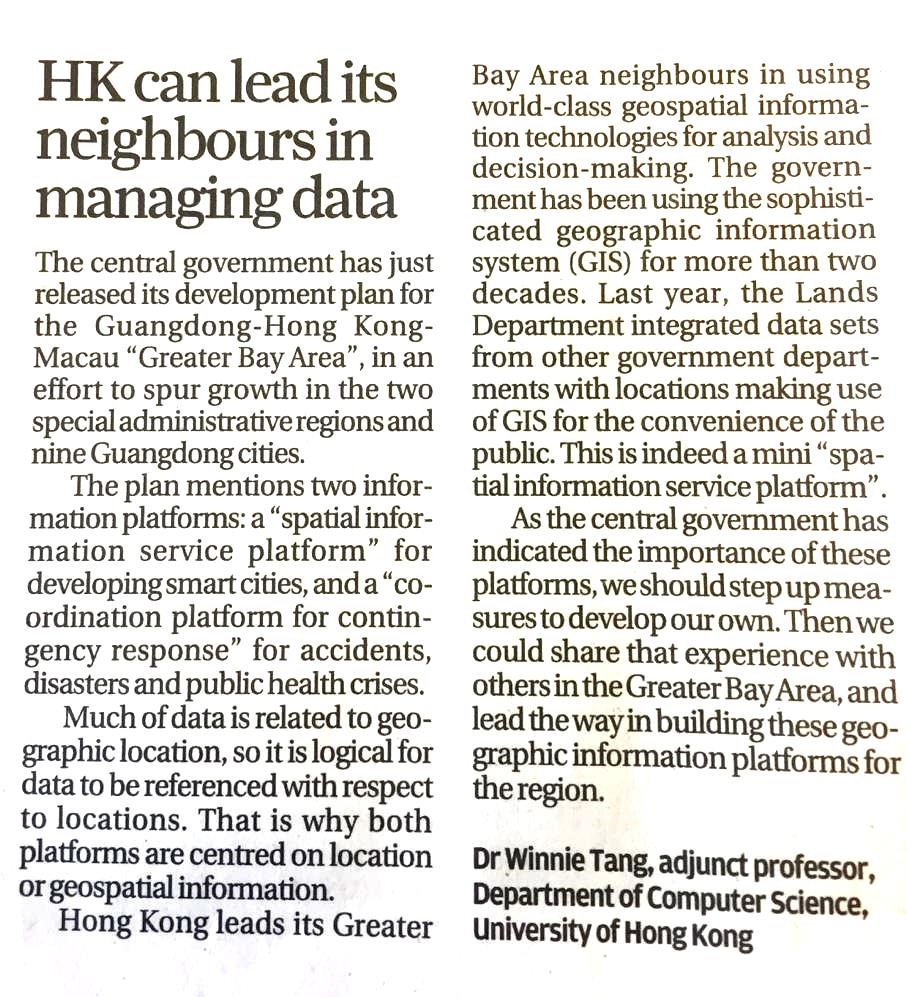網上版請按此

HK can lead its neighbours in managing data
The central government has just released its development plan for the Guangdong-Hong Kong-Macau "Greater Bay Area", in an effort to spur growth in the two special administrative regions and nine Guangdong cities.
The plan mentions two information platforms: a "spatial information service platform" for developing smart cities, and a "coordination platform for contingency response" for accidents, disasters and public health crises.
Much data is related to geographic location, so it is logical for data to be referenced with respect to locations. That is why both platforms are centred on location or geospatial information.
Hong Kong leads its Greater Bay Area neighbours in using world-class geospatial information technologies for analysis and decision-making. The government has been using the sophisticated geographic information system (GIS) for more than two decades. Last year, the Lands Department integrated data sets from other government departments with locations making use of GIS for the convenience of the public. This is indeed a mini "spatial information service platform".
As the central government has indicated the importance of these platforms, we should step up measures to develop our own. Then we could share that experience with others in the Greater Bay Area, and lead the way to building these geographic information platforms for the region.
Dr. Winnie Tang
Adjunct Professor, Department of Computer Science, Faculty of Engineering and Faculty of Architecture, The University of Hong Kong